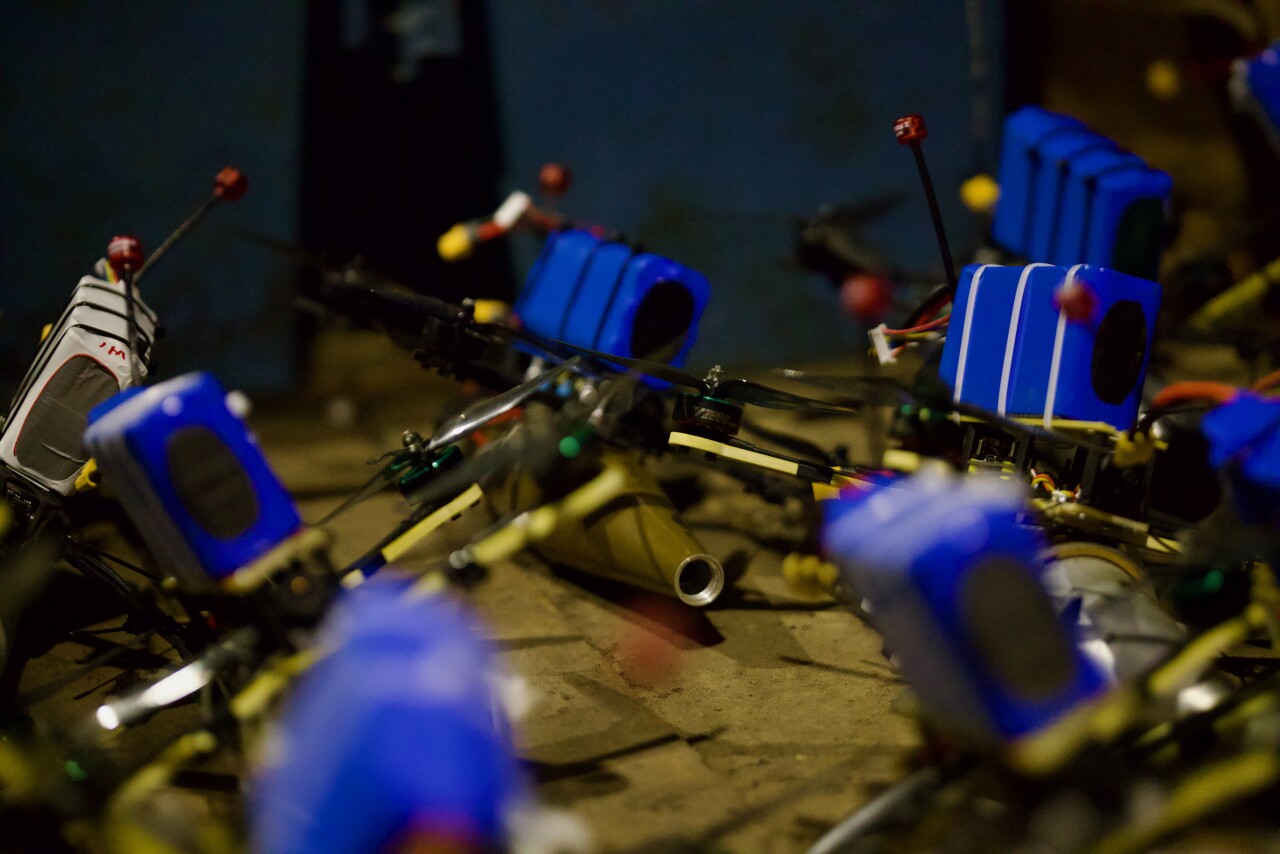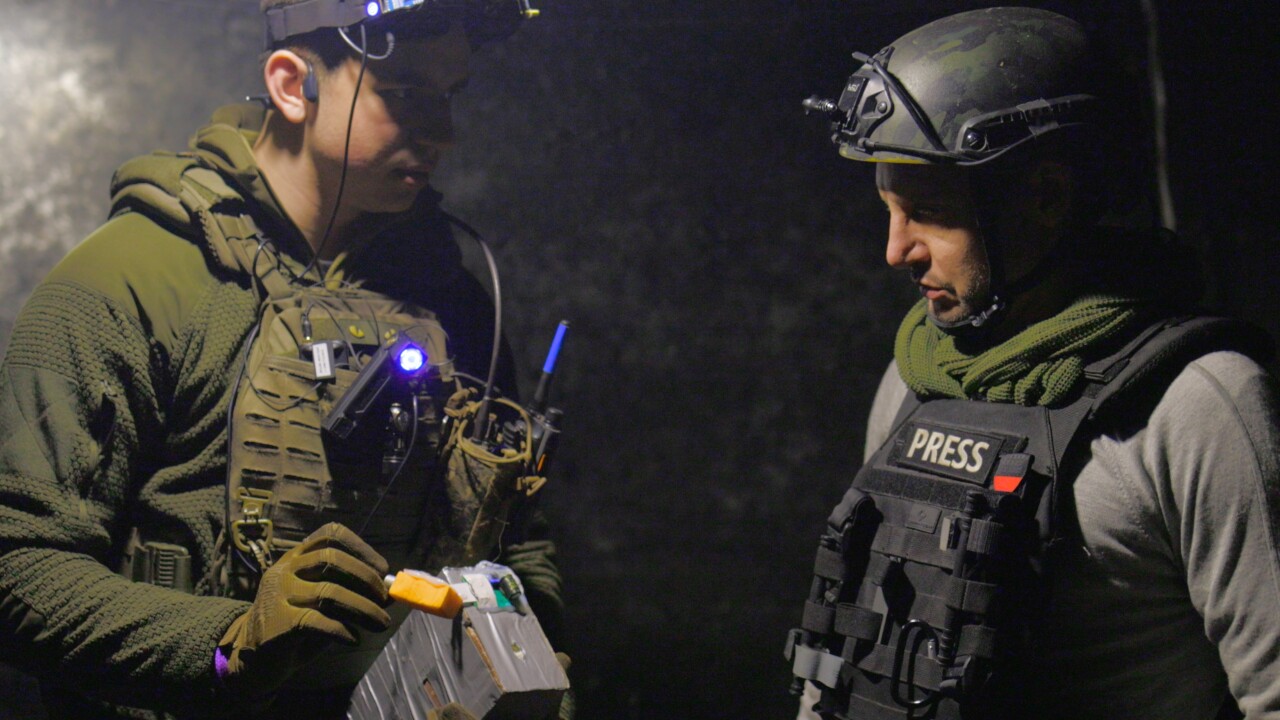Exploring the world of one of Ukraine’s most accomplished FPV drone pilots — a 20-year-old former medical student who personifies the evolutionary leap in drone warfare.
Before Russia's full-scale invasion of his country, he was a medical school student. He loved reading about biology.
He set his books aside to join Ukraine's struggle for survival — first as a combat medic. His comrades dubbed the young scholar "Darwin."
The callsign stuck. The war evolved. So did his role in it.
His unit received surveillance drones, and, to his commanders, it quickly became clear: Darwin's fast fingers were more valuable turning knobs than tightening tourniquets.
But his true dexterity and derring-do as a pilot would not be fully realized until last summer — when drone warfare took an evolutionary leap.

Turns out, the small, inexpensive, consumer drones that Darwin and thousands of others had been flying as eyes in the sky could (with bigger batteries attached) be strapped with explosives.
But that wasn't all.

Staring down at a screen, pilots can manage a drone's movement well enough to navigate the battlefield. But when that same pilot looks at the drone's camera through immersive goggles, an elevated brain-body connection emerges.
First person view (FPV) drones can enable a pilot (a highly skilled one) to fly his machine wherever his mind may take him.
When we first met Darwin in a rear training area last October, he described it to us this way:
"You really feel like a bird... and not just a bird, but a bird that explodes at the end."
But not all birds are predators, and not all predators are equally adept at catching prey.
Darwin downplays his experience as a video gamer, but it also seems a no brainer that the neural pathways forged at the controls of an XBox 360 carry over to in real life mortal combat.

"I don't know if it's a coincidence or not," says Darwin. "I have six thousand hours in Dota, another two thousand in Counterstrike and, of course, other multiplayer action games."

Highly skilled FPV drone pilots can chase things — like tanks and mobile artillery.
They can chase people — individual enemy soldiers, who are often bolting in terror. By now, soldiers on both sides know that by the time they hear that whizzing sound, their fate has likely been sealed.

The best of the best FPV drone pilots can make surprise appearances through narrow places — like open windows and bunker entries.

For this episode of "In Real Life," we accompanied the "Achilles" Strike UAV Battalion (named after a legendary Ukrainian warrior, Ivan Sirko) of Ukraine's 92nd Assault Brigade to their secret frontline position in Eastern Ukraine.
Our day began at 3 a.m. An ammo truck secreted us to their location during the brief, pre-dawn window when Russian thermal image drones would be less likely to spot the truck dropping us off there.

The unit's home base is a bunker laden with explosives of various strengths. The smallest ones are used to hunt individual Russians; the largest ones are reserved for tanks.

It's cold down there. Darwin uses this gas heater to keep his fingers warm between missions. We asked him about the danger of having an open flame so close to dozens of pounds of explosives. He reassures us:
"If it blows up," he says, "you won't feel anything."

The explosives are triggered to detonate by kinetic force. We're told to stay far away from the drones as they're launched; they've been known to, on occasion, explode during takeoff.

The team runs on adrenaline, caffeine, nicotine, Pringles, and zip-ties.

They work three "shifts" back-to-back, only getting a few hours of rest back at their house before embarking on the next day's missions.

At one point, incoming Russian artillery forces the team to pause their missions for around a half hour. We're shown a piece of shrapnel that landed near the bunker. "Still warm," we're told.

This "In Real Life" episode is about more than the thrill of the hunt. It's also about the realities of the new day dawning — the use of FPV suicide drones on a massive scale.

Darwin admits all these missions targeting Russian soldiers, playing out in real time an inch from his eyes, may be taking a psychological toll on him. But he says he'll seek help dealing with that, if he needs it, "after victory."
Show Team

- Jason Bellini, Scripps News’ international correspondent.
- Sebastian Lindstrom, director of photography.
- Dmytro Horyevoy, Ukrainian producer.


